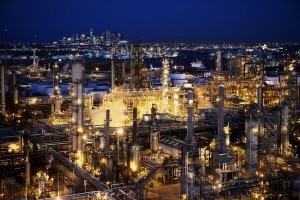A June 5 Reuters report noted that Americans are on track to drive a record number of miles this year, while also noting that the U.S. Gulf Coast continues to maintain its status as a global refining hub with growing volumes of exported refined products, especially gasoline to Latin America. Even so, U.S. gasoline demand in the first quarter was down 2.7% from a year earlier, according to the latest monthly data from the U.S. Energy Information Administration. (EIA). U.S. Gulf Coast refineries processed a record 9.45 million barrels of crude oil last week, according to the EIA, marking the third consecutive week above 9 million barrels. U.S. refineries processed 17.5 million bpd of crude in the week ending on May 26, according to the EIA (“Weekly Petroleum Status Report”, EIA, June 1).
Throughput was more than 1.2 million bpd higher than at the same point in 2016 and 2.2 million bpd above the 10-year seasonal average. But the Reuters report noted that despite fears that record processing would result in a build-up of unsold products, stocks of gasoline and diesel have generally moved in line with normal seasonal patterns. Part of the explanation lies in the strength of exports, mostly to markets in Central America, South America and the Caribbean, where deteriorating and inefficient refineries have struggled to meet growing demand from consumers.
U.S. refineries and traders are increasingly geared towards meeting demand from the rest of the hemisphere rather than just the U.S., having exported 640,000 bpd of gasoline in the week ending on May 26, and a near-record 1.25 million bpd of distillate fuel oil. Domestic fuel consumption is also now running at record or near-record levels, according to an analysis of EIA data. Gasoline supplied to domestic customers in the U.S. hit a record 9.8 million bpd last week (up to June 2), an increase of roughly 330,000 bpd compared with the same period in 2016. Distillate supplied averaged 4.1 million bpd, significantly higher than in 2016, though still below the record set in 2007.
Reuters also noted that refinery margins in most parts of the U.S. have been little changed during the second quarter of 2017 compared with the same period in 2016, despite much higher throughput. According to the EIA, U.S. refiners have added almost 500,000 bpd of atmospheric crude distillation unit (CDU) capacity since the start of 2016. Building and expanding CDUs is expensive, so once these units are commissioned there is a strong incentive to use them to start recovering the cost. For example, in the interest of efficiency and reduced CAPEX, certain refiners have built CDUs designed to exclusively process shale based light tight oils (e.g., Flint Hills refinery in Corpus Christi, Tx and Valero refinery in Three Rivers, Tx), typically circumventing the need for an expensive vacuum distillation unit (VDU), as seen with those refiners processing heavy, “opportunity” crudes that typically require a CDU designed with both an atmospheric distillation column as well as a VDU.
Actually, both types of CDU configurations can be seen in operation at those refineries processing both LTOs and heavy crudes, such as the bespoke Flint Hills facility. This goes without saying that U.S.-based refiners are well placed to capture market share from weaker and less flexible rivals in other parts of the Atlantic Basin. One of the main reasons is because they have lower transportation costs given their proximity to sources of crude from the Eagle Ford, Permian and Bakken hydrocarbon resources, while being closer to major fuel customers than rival suppliers in Europe and Asia.
.








Leave a Reply
You must be logged in to post a comment.